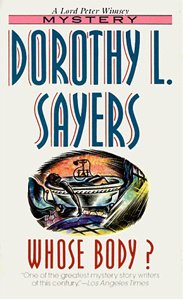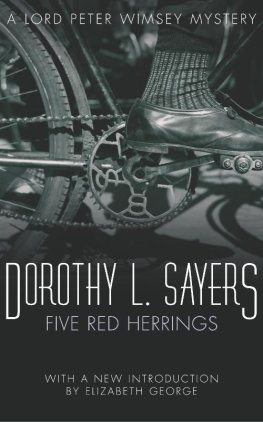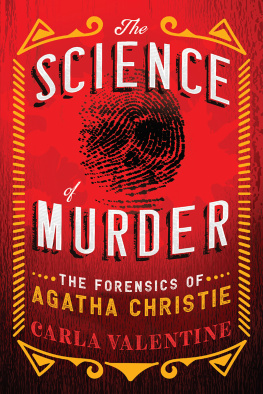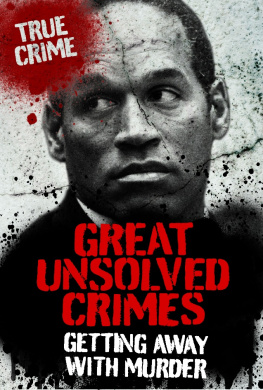Dorothy Hoobler - Crimes of Paris: A True Story of Murder, Theft, and Detection
Here you can read online Dorothy Hoobler - Crimes of Paris: A True Story of Murder, Theft, and Detection full text of the book (entire story) in english for free. Download pdf and epub, get meaning, cover and reviews about this ebook. year: 2009, publisher: Little, Brown & Company, genre: Non-fiction. Description of the work, (preface) as well as reviews are available. Best literature library LitArk.com created for fans of good reading and offers a wide selection of genres:
Romance novel
Science fiction
Adventure
Detective
Science
History
Home and family
Prose
Art
Politics
Computer
Non-fiction
Religion
Business
Children
Humor
Choose a favorite category and find really read worthwhile books. Enjoy immersion in the world of imagination, feel the emotions of the characters or learn something new for yourself, make an fascinating discovery.

- Book:Crimes of Paris: A True Story of Murder, Theft, and Detection
- Author:
- Publisher:Little, Brown & Company
- Genre:
- Year:2009
- Rating:3 / 5
- Favourites:Add to favourites
- Your mark:
- 60
- 1
- 2
- 3
- 4
- 5
Crimes of Paris: A True Story of Murder, Theft, and Detection: summary, description and annotation
We offer to read an annotation, description, summary or preface (depends on what the author of the book "Crimes of Paris: A True Story of Murder, Theft, and Detection" wrote himself). If you haven't found the necessary information about the book — write in the comments, we will try to find it.
Crimes of Paris: A True Story of Murder, Theft, and Detection — read online for free the complete book (whole text) full work
Below is the text of the book, divided by pages. System saving the place of the last page read, allows you to conveniently read the book "Crimes of Paris: A True Story of Murder, Theft, and Detection" online for free, without having to search again every time where you left off. Put a bookmark, and you can go to the page where you finished reading at any time.
Font size:
Interval:
Bookmark:
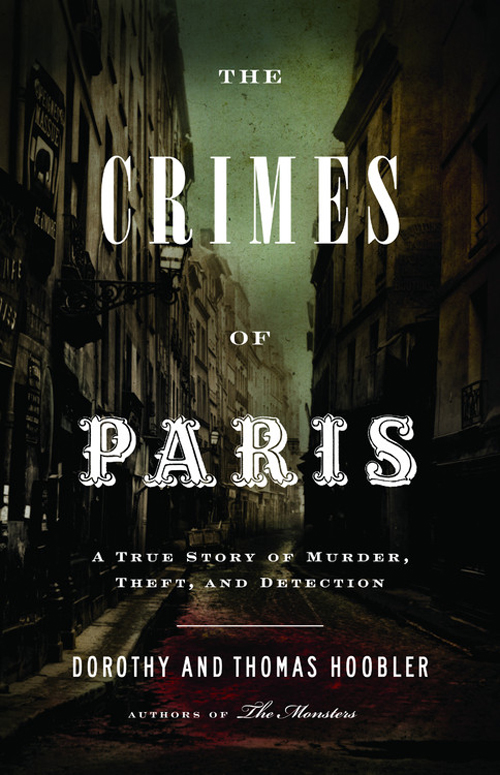
Copyright 2009 by Dorothy Hoobler and Thomas Hoobler
All rights reserved. Except as permitted under the U.S. Copyright Act of 1976, no part of this publication may be reproduced, distributed, or transmitted in any form or by any means, or stored in a database or retrieval system, without the prior written permission of the publisher.
Little, Brown and Company
Hachette Book Group
237 Park Avenue, New York, NY 10017
Visit our Web site at www.HachetteBookGroup.com
www.twitter.com/littlebrown
First eBook Edition: April 2009
Little, Brown and Company is a division of Hachette Book Group, Inc.
The Little, Brown name and logo are trademarks of Hachette Book Group, Inc.
ISBN: 978-0-316-05253-5


I t was a Monday and the Louvre was closed. As was standard practice at the museum on that day of the week, only maintenance workers, cleaning staff, curators, and a few other employees roamed the cavernous halls of the building that was once the home of Frances kings but since the Revolution had been devoted to housing the nations art treasures.
Acquired through conquest, wealth, good taste, and plunder, those holdings were splendid and vast so much so that the Louvre could lay claim to being the greatest repository of art in the world. With some fifty acres of gallery space, the collection was too immense for visitors to view in a day or even, some thought, in a lifetime. Most guidebooks, therefore, advised tourists not to miss the Salon Carr (Square Room). In that single room could be seen two paintings by Leonardo da Vinci, three by Titian, two by Raphael, two by Correggio, one by Giorgione, three by Veronese, one by Tintoretto, and representing non-Italians one each by Rubens, Rembrandt, and Velzquez.
A stunning display, certainly. But even in that collection of masterpieces, one painting stood out from the rest. That very morning August 21, 1911 as the museums maintenance director, a man named Picquet, passed through the Salon Carr on his rounds, he pointed out Leonardo da Vincis Mona Lisa, telling a co-worker that it was the most valuable object in the museum. They say it is worth a million and a half, Picquet remarked, glancing at his watch as he left the room. The time was 7:20 A.M.
Shortly after Picquet departed the Salon Carr, a door to a storage closet opened and a man (or men, for it was never proved whether the thief worked alone) emerged. He had been in there since the previous day Sunday, the museums busiest, as that was the only day most Parisians had off from work. Just before closing time, the thief had slipped inside the little closet so that he could emerge in the morning without the need to identify himself to a guard at the entrance.
There were many such small rooms and hidden alcoves within the seven-hundred-year-old building; museum officials later confessed that no one knew how many. This particular one was normally used for storing the easels, canvases, and supplies of artists who were engaged in copying the works of Old Masters a training exercise for those who wished to improve their technique. The only firm antiforgery requirement the museum placed on such students was that the reproductions could not be the same size as the originals.
Emerging from the closet, the intruder might have been mistaken for one of these copyists, for he wore a white artists smock. However, his garment had another purpose on this particular day: the museums maintenance staff also wore such smocks, apparently a practice intended to demonstrate that they were on a higher plane than ordinary workers, and if anyone noticed the thief, he would likely be taken for another of the regular museum employees.
As he entered the Salon Carr, he headed straight for his intended target: the Mona Lisa. Only four sturdy hooks held it there, no more securely than if it were a framed print in the house of a bourgeois Parisian. Later, museum officials said that the paintings were fastened to the wall in this way to make it easy for guards to remove them in case of fire.
Even so, lifting down the Mona Lisa and carrying it into a nearby enclosed stairwell was no easy job. The painting itself weighs approximately eighteen pounds, for Leonardo painted it not on canvas but on three slabs of wood. A few months earlier, the museums directors had taken steps to physically protect the Mona Lisa by reinforcing it with a massive wooden brace and placing it inside a glass-fronted box, adding 150 pounds to the weight. The decorative Renaissance frame contributed perhaps 30 additional pounds, bringing the total to nearly 200 pounds.
Once safely out of sight behind the closed door of the stairwell, the thief quickly stripped the painting of all its protective garments the brace, the glass case, and the frame. Since the Mona Lisas close-grained wood, an inch and a half thick, made it impossible to roll up, the thief slipped the work underneath his smock. Measuring approximately thirty by twenty-one inches, the painting was small enough to avoid detection.
Though evidently familiar with the layout of the museum, the thief had made one mistake in his planning. The enclosed stairway led down to the first floor of the museum, but at the bottom was a locked door. The thief had obtained a key, but now it failed to work. Desperately, he used a screwdriver to remove the doorknob but then heard footsteps coming from above.
Down the stairs came one of the Louvres plumbers, a man named Sauvet. Later, Sauvet the only man to witness the thief inside the museum testified that he saw one man (only one), dressed as a museum employee. The man complained that the doorknob was missing. Helpfully, Sauvet unlocked the door with his own key and even produced a pliers to turn the mechanism to open the door. The plumber suggested that they leave it open in case anyone else should use the staircase. The thief agreed and went on about his business.
The door opened onto a courtyard, the Cour du Sphinx. From there the thief crossed through another gallery and into the Cour Visconti and then probably trying not to appear in a hurry headed toward the main entrance of the museum. Few guards were on duty that day, because it was felt they were only necessary when the public was admitted. However, there was one assigned to that entrance, the last barrier between the thief and the city. As luck would have it, he had left his post to get a bucket of water to clean the vestibule. He never saw the thief, or thieves, leave the building.
One person outside did: a passerby who noticed a man on the sidewalk carrying a package wrapped in white cloth (the smock that he had used to impersonate a workman). The witness recalled seeing the man throw a shiny metal object into the ditch along the edge of the street. The passerby glanced at it. It was a doorknob.
Inside the museum, all was serene and would remain so for quite some time. At 8:35 A.M. Picquet passed through the Salon Carr again and noted that the painting was gone. He thought little of it at the time, for the museums photographers freely removed objects without notice and took them to a studio elsewhere in the building. Indeed, Picquet even remarked to his workers, I guess the authorities have removed it because they thought we would steal it! His quip seemed less humorous later.
Incredibly, all through that day no one thought it alarming that there was an empty space where the Mona Lisa should have been. Not until Tuesday, when the Louvre again opened its doors to the public, did anyone express concern over the fact that the worlds most famous painting was missing from its usual place. Louis Beroud, an artist, set up his easel in the Salon Carr. He was not there to copy a particular work. His intention was to create a genre painting that would show much of the room and the contents of its walls. (Sometimes Berouds scenes included attractive young women viewing the museums collection. His paintings, and others like them, were popular with foreign visitors who wanted something more than postcards as souvenirs of their trips to Paris.)
Font size:
Interval:
Bookmark:
Similar books «Crimes of Paris: A True Story of Murder, Theft, and Detection»
Look at similar books to Crimes of Paris: A True Story of Murder, Theft, and Detection. We have selected literature similar in name and meaning in the hope of providing readers with more options to find new, interesting, not yet read works.
Discussion, reviews of the book Crimes of Paris: A True Story of Murder, Theft, and Detection and just readers' own opinions. Leave your comments, write what you think about the work, its meaning or the main characters. Specify what exactly you liked and what you didn't like, and why you think so.



